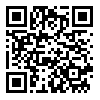Volume 13, Issue 1 (March- 2024)
Caspian J Dent Res 2024, 13(1): 26-34 |
Back to browse issues page
Ethics code: IR.IAU.DENTAL.REC.1400.030
Download citation:
BibTeX | RIS | EndNote | Medlars | ProCite | Reference Manager | RefWorks
Send citation to:



BibTeX | RIS | EndNote | Medlars | ProCite | Reference Manager | RefWorks
Send citation to:
Hassanzadehganroudsari G, Khatibi M, Hoseinidoust S R, Sarahroodi S. Evaluation of the Antibacterial Effect of Hydroalcoholic Pomegranate Peel Extract on Lactobacillus Acidophilus. Caspian J Dent Res 2024; 13 (1) :26-34
URL: http://cjdr.ir/article-1-426-en.html
URL: http://cjdr.ir/article-1-426-en.html
, Department of Oral Medicine, Faculty of Dentistry, Islamic Azad University Tehran Medical Sciences, Tehran, Iran . , mandanakhatibi@yahoo.com
Abstract: (1604 Views)
Introduction: Dental caries occurs at a specific site when the lactobacilli of that site reach 8% of the total bacteria in that site. The aim of this study was to investigate the antibacterial effect of pomegranate peel extract. Materials & Methods: This experimental in vitro study was performed with 6 standard bacterial groups, including a group with 0.2% chlorhexidine and 4 groups with pomegranate extract concentrations of 10, 25, 50 and 100 mg/mL, as well as a blank plate group for determination of the zone of inhibition and a group of standard bacterial samples for determination of the minimum inhibitory concentration (MIC) on Lactobacillus acidophilus. The data were statistically analyzed using One-way ANOVA and Tukey Honestly Significant Difference (HSD) to measure the diameter of the growth inhibition zone. A value of P<0.05 was considered significant. Results: The results of the inhibition zone diameter evaluation showed that different concentrations of the extract (10, 25, 50 and 100 mg/mL) had a positive inhibitory effect on Lactobacillus acidophilus. The results of the diameter of the inhibition zone using the disc plate method indicated that as the extract concentration increased, the antimicrobial effect on the bacteria increased and a significant difference was found between the diameters of the inhibition zone of four concentrations (16.5, 23.5, 26, 29.8 mm) (P<0.05). Examination of the MIC using the broth dilution method demonstrated that the effective amount of hydroalcoholic extract of pomegranate peel to prevent bacterial growth ranged from 12.5 to 25 (mg/ml). Moreover, chlorhexidine showed the highest growth inhibition zone (30 mm) in all studied groups. Conclusion: According to the results of the current study, the hydroalcoholic extract from the pomegranate peel may have antimicrobial properties and it seems that the pomegranate fruit can be used as an antibacterial agent against Lactobacillus acidophilus, which can reduce the use of antibacterial chemical compounds with lower costs and side effects. Keywords: Pomegranate, Anti-Bacterial agents, Lactobacillus acidophilus
Type of Study: Research Paper |
Subject:
Oral Health
Send email to the article author
| Rights and permissions | |
 |
This work is licensed under a Creative Commons Attribution-NonCommercial 4.0 International License. |







